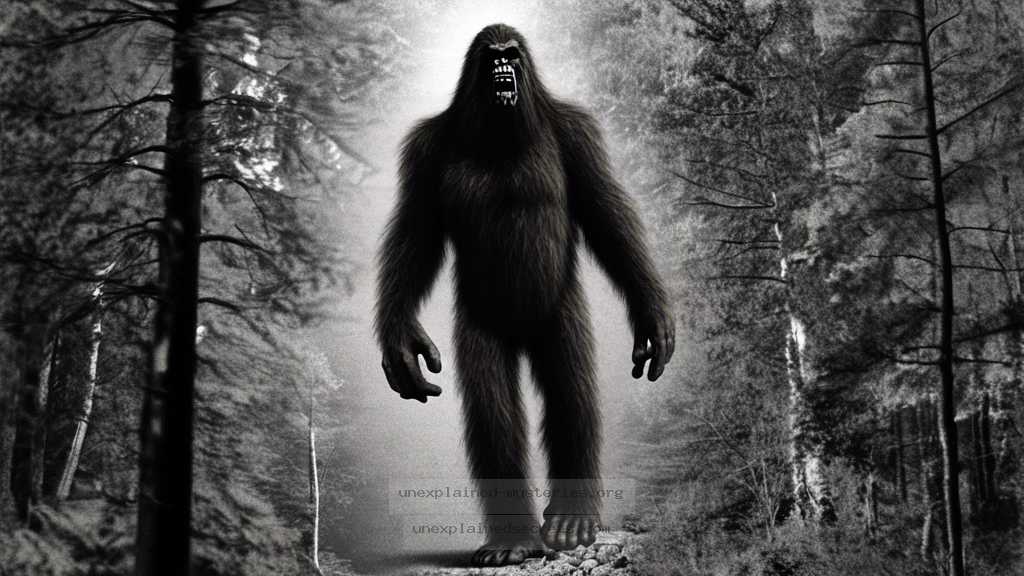What Does the Patterson-Gimlin Film Reveal About the Existence of Bigfoot?
What Does the Patterson-Gimlin Film Reveal About the Existence of Bigfoot?
The Patterson-Gimlin film, shot in 1967, remains one of the most debated pieces of evidence in the cryptozoological community regarding the existence of Bigfoot. This question matters not only because of its historical significance but also due to its implications for the study of unidentified creatures and the broader understanding of human belief in the paranormal. In this blog post, we will delve into the film’s context, analyze its content, examine varying interpretations, and explore what it means for the ongoing search for Bigfoot.
The Historical Context of the Patterson-Gimlin Film
The Patterson-Gimlin film was recorded on October 20, 1967, in Bluff Creek, California, by Roger Patterson and Bob Gimlin. The duo set out to capture evidence of Bigfoot after hearing local reports of large, ape-like creatures in the area. Their film captures a 60-second clip of what appears to be a large, bipedal creature walking through the forest. The footage has since garnered attention from both believers and skeptics alike.
At the time of filming, the concept of Bigfoot was not new; however, it had not yet gained the level of mainstream notoriety it enjoys today. The film essentially helped to propel the Bigfoot phenomenon into popular culture, influencing countless documentaries, books, and even movies. The historical context is crucial to understanding why this film remains a focal point in cryptozoological studies.
Breaking Down the Film: Key Features
Several aspects of the Patterson-Gimlin film contribute to its intrigue. Firstly, the creature appears to be over 7 feet tall, covered in dark hair, and possesses human-like features. The gait of the creature is often cited as evidence of its authenticity, as it moves with a unique, fluid motion that some argue is difficult to replicate in a costume.
- Height: Estimated at over 7 feet
- Hair: Dark and shaggy covering the entire body
- Gait: Unique, fluid motion
- Facial Features: Human-like yet distinct from known primates
Theories Surrounding the Footage’s Authenticity
Discussions about the film invariably lead to theories about its authenticity. Some researchers assert that the creature is indeed a Bigfoot, citing its anatomical features and movement. Others, however, argue that the film is a hoax, suggesting that Patterson and Gimlin used a suit, potentially designed by special effects expert John Chambers.
One of the most compelling arguments for the film’s authenticity comes from the analysis of the creature’s foot. The footprints found at the scene, which were cast by Patterson, exhibit a unique morphology that resembles those of known primates but also contains features that have yet to be explained. This has led some to theorize that the creature is either a previously undiscovered species or an extraordinary example of a known animal.
Impact of the Film on Bigfoot Research
The Patterson-Gimlin film has had a profound impact on Bigfoot research, inspiring not only amateur enthusiasts but also serious scientists to explore the existence of unknown primates in North America. The film has fueled expeditions, studies, and even the establishment of organizations dedicated to the study of cryptids.
Moreover, it has led to a variety of methodologies being employed in the search for Bigfoot. Researchers have utilized thermal imaging, audio recordings, and even DNA sampling in efforts to uncover the truth behind the legend. The film itself is often used as a benchmark against which new evidence is measured.
Alternative Perspectives: Debunking and Skepticism
Common Misconceptions About the Patterson-Gimlin Film
When discussing the Patterson-Gimlin film, several misconceptions often arise. One of the most common is the belief that the film is the only piece of evidence supporting the existence of Bigfoot. In reality, while it may be the most famous, there are numerous other sightings, footprints, and anecdotal reports that contribute to the ongoing debate.
- The film is the only evidence for Bigfoot’s existence.
- All researchers believe the film is genuine.
- Bigfoot is just a myth perpetuated by folklore.
Best Practices for Investigating Bigfoot Evidence
For those interested in investigating the world of Bigfoot, there are several best practices to consider. First, it’s essential to approach the subject with a healthy skepticism and a scientific mindset. Gathering evidence should be systematic, involving multiple methodologies to ensure accuracy.
Secondly, documenting sightings and experiences is crucial. Keeping detailed records can help to identify patterns and potentially lead to new discoveries. Collaboration with other enthusiasts and researchers can also provide fresh perspectives and insights.
Future Developments in Bigfoot Research
As technology advances, so too does the potential for new discoveries in the realm of Bigfoot research. Emerging technologies like environmental DNA (eDNA) analysis are becoming vital tools for researchers. These methods allow scientists to detect and identify biological materials in the environment, potentially revealing the presence of previously unknown species.
Additionally, ongoing public interest leads to new expeditions and studies aimed at uncovering the truth about Bigfoot. The Patterson-Gimlin film remains a focal point for discussions, inspiring new generations of researchers and enthusiasts to explore the woods in search of this elusive creature.
Conclusion: The Enduring Mystery of Bigfoot
In summary, the Patterson-Gimlin film stands as a landmark in the study of Bigfoot and continues to spark debate and intrigue over five decades after its release. While the authenticity of the footage remains contentious, its impact on cryptozoology is undeniable. The film has not only shaped the way we view Bigfoot but also encouraged scientific inquiry into the unknown.
As we move forward, the combination of historical context, ongoing research, and advancements in technology may eventually lead to answers about the existence of Bigfoot. Whether one believes in the creature or not, the mystery continues to captivate the imagination, prompting us to explore the shadows of the forest in search of what might just be out there. 💡
Other Articles
Recent Posts
- What Happened to Flight MH370? The Conspiracy Theories That Still Haunt Us
- What Secrets Lurk Within the Walls of the Infamous Trans-Allegheny Lunatic Asylum?
- What Evidence Supports the Existence of Bigfoot in the Pacific Northwest?
- What Happened to the Indus Valley Civilization? Unraveling the Mysteries of Ancient Urban Life
- Can Telepathy Be Scientifically Proven Through Laboratory Evidence?







